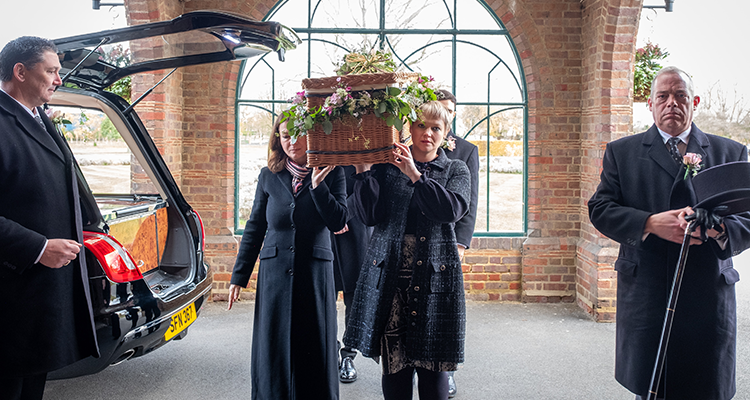When planning a funeral, many families face the challenge of balancing a respectful farewell with the reality of budget limitations. Understanding what is the most cost-effective funeral is crucial to making informed decisions that align with both emotional needs and financial constraints. Funeral costs can vary greatly, depending on the services selected, ranging from a simple direct cremation to a more elaborate traditional full-service burial.
Navigating this process may seem overwhelming, but choosing the right funeral option can help families save money while still honoring their loved one. Whether you’re opting for a modest service or something more formal, understanding the available choices ensures a smoother experience during an already difficult time.

By carefully selecting services and planning ahead, you can achieve a dignified yet affordable funeral that respects both your family’s needs and financial situation.
Breaking Down Funeral Costs: What You Need to Know
Funeral costs are typically divided into several categories, making it easier to understand where expenses arise. One of the primary charges is the basic services fee, which covers the essential work of the funeral director and staff, including administrative tasks like securing the death certificate and coordinating logistics. This fee is standard across most funeral homes and cannot be waived.

Beyond this, additional specific services can increase the total cost. These may include charges for the use of facilities for viewings, transportation (such as a hearse), and the actual handling of the body, including embalming or cremation.
It’s also important to account for any merchandise like caskets or urns, and cash advances for third-party expenses like flowers or cemetery costs. Understanding these components helps families better navigate the often complex world of funeral costs while ensuring they only pay for the services they truly need.
Traditional Funeral Options and Their Costs
Traditional funerals often follow a formal structure that includes multiple services and steps, contributing to higher funeral costs. One of the most common choices is a traditional full-service burial, which typically includes a formal ceremony, viewing or visitation, and transportation of the body to the cemetery. These services come with a range of associated costs, starting with the casket, which can vary from simple models to more elaborate and expensive ones.

The embalming process is often required to preserve the body for viewing, adding another layer of expense. Transportation, such as the use of a hearse, and the rental of a venue for the visitation are also included. In addition, securing a burial plot in a cemetery can come with substantial costs, especially in urban areas.
Together, these components contribute to the overall price of a traditional full-service burial, making it one of the more expensive funeral options. Families may also encounter additional costs for services like floral arrangements, obituary notices, and the use of funeral home staff.
Formal Funeral Service with Viewing
A formal funeral service with a viewing is a traditional way for families to say their final goodbyes to their loved one. This service typically includes a viewing or visitation, where mourners can gather to pay respects. The body is prepared for display, which often involves embalming to preserve the deceased’s appearance.
While this process can offer closure, it also comes with additional costs. The fees for using the funeral home’s facilities, preparing the body, and arranging the ceremony all add to the total price. Families should consider whether these elements fit both their emotional and financial needs.
Immediate Burial or Direct Burial
Direct burial, also known as immediate burial, is a more cost-effective alternative to traditional burial services. This option skips the processes of embalming and formal viewing, which significantly reduces the overall expenses.
With direct burial, the body is placed in a burial plot shortly after death, without a public ceremony. Families can choose to hold a memorial service at a later time if desired. Since it avoids the use of a funeral home for extended periods and reduces unnecessary extras, direct burial is considered one of the least expensive funeral options available.
Affordable Cremation Options: Direct Cremation
Direct cremation is one of the most cost-effective funeral options available today. Unlike traditional funerals, direct cremation does not involve embalming, viewing, or a formal ceremony, making it a straightforward and affordable choice for many families. The cost of direct cremation typically ranges from $600 to $3,000, depending on the cremation provider and the specific services selected. This option includes the cremation process, handling the body, transportation to the crematorium, and returning the ashes to the family.
What makes direct cremation attractive is that it allows families to focus on honoring their loved one in a more flexible and personalized way, such as holding a memorial service at a later date or in a location of their choice. By minimizing additional services, families can save significantly on funeral costs.
Direct Cremation vs. Cremation with Service
While direct cremation is the simplest and most affordable option, some families may prefer a cremation that includes a formal funeral service. In this scenario, a traditional ceremony is held either before or after the cremation, which involves extra costs for things like venue rental, officiant services, and potentially embalming.
The difference in costs can be significant, with cremation with service generally costing more due to these additional costs. For families seeking a lower-cost option, direct cremation offers simplicity and affordability without sacrificing dignity.
Memorial Service: A Personalized Alternative
A memorial service is a meaningful way to celebrate the life of a loved one, offering families the chance to gather and reflect. Unlike traditional funerals, memorial services are often held separately from the burial or cremation, and can be scheduled at a later date.
This flexibility allows families more time to plan and reduces the immediate pressure to arrange everything at once. Memorial services can be personalized with elements such as eulogies, music, and visual tributes, and they can take place in a variety of locations, including a funeral home, church, or even a park.
By holding a memorial service after the cremation or burial, families can often manage costs more effectively, as there is no need for embalming or a formal viewing. Simple touches, such as choosing local flowers or using a meaningful burial site, can help keep the service personal without the need for expensive extras
Green Burial: An Environmentally Friendly and Cost-Effective Option
For families seeking an affordable and eco-friendly option, a green burial offers a sustainable alternative to traditional funerals. In a green burial, the body is laid to rest in a way that minimizes environmental impact. This typically involves forgoing embalming, using a biodegradable casket or shroud, and choosing a natural burial site, such as a green cemetery.
These eco-friendly practices not only reduce the funeral’s carbon footprint but also lower the overall cost by eliminating unnecessary processes and products.

Green burial is often considered one of the least expensive burial options, as it avoids costly extras like elaborate caskets and long-term maintenance of grave sites. Families who value simplicity and environmental responsibility may find green burial an appealing choice that aligns with their values while still being budget-conscious.
Funeral Laws in Texas: What You Need to Know
Texas has specific regulations that families must follow when planning a funeral, which can impact overall funeral costs. For instance, Texas law requires that bodies be either embalmed, refrigerated, or placed in a sealed container if burial or cremation does not occur within 24 hours of death.
This requirement can increase costs for families, especially when embalming is involved. However, embalming is not necessary for all types of funerals, such as direct burial or direct cremation, which can help lower expenses.
Texas allows for significant family involvement in the funeral process. Families are permitted to file the death certificate themselves and handle the body, which can help save on administrative fees. Additionally, understanding local cemetery requirements for a burial site or cremation process is crucial, as these vary and may add costs based on location and regulations.
Additional Costs to Consider: Beyond the Funeral Service
While the core services of a funeral include arrangements like burial or cremation, there are several additional costs that families need to account for. These often include the purchase of a burial plot or headstone, which can vary in price depending on the location and cemetery. Other costs can include floral arrangements, which can range from simple bouquets to elaborate displays, adding a significant amount to the total.
Transportation fees, such as the use of a hearse to transport the body, and any special handling or facilities fees can also increase the overall bill. For those opting for cremation, the purchase of an urn is another consideration. To manage these expenses, families can choose simpler alternatives or scale back on non-essential services. Comparing prices and opting for basic services can help avoid excessive charges.
Comparing Funeral Providers to Find the Best Prices
One of the best ways to reduce funeral costs is by comparing different funeral homes and providers. Funeral homes are required by law to provide itemized price lists, so families should request these to make informed decisions.
Online tools and comparison websites allow families to quickly compare prices and services offered by various providers in their area, helping them find the most suitable options.

It’s important to contact several funeral directors to get quotes and understand what specific services are included in the total cost. Additionally, some providers may offer packages that bundle essential services at a lower cost. By being proactive and gathering information, families can find an affordable option without compromising the quality of the funeral service.
Making the Right Choice for Your Family
Selecting a cost-effective funeral option requires careful consideration of both personal and financial preferences. Families should take the time to understand the various funeral choices, from direct cremation to green burial, and choose the option that aligns with their values and budget.
By working closely with funeral directors and comparing prices, families can plan an affordable funeral that meets their needs without unnecessary financial strain. Proper planning, whether for a sudden loss or through pre-arrangements, ensures a respectful and budget-conscious farewell.

